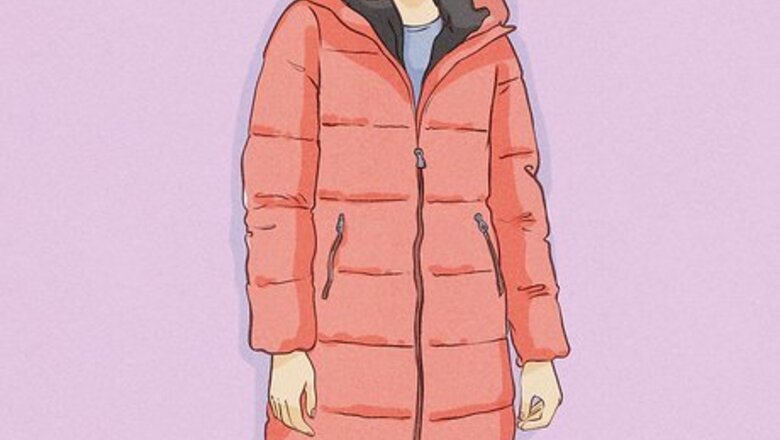
views
Choosing the Right Clothes
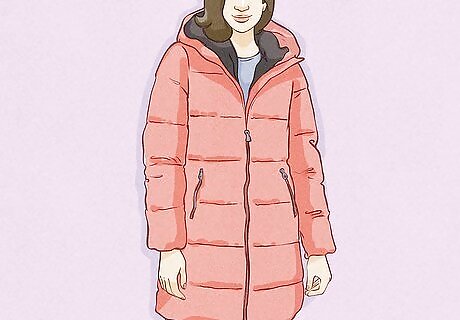
Get a high-quality coat with a hood. Your coat should fit a little loose on your body so that you can comfortably layer clothing underneath it. Opt for polyester, polypropylene, or water-resistant materials like nylon to protect yourself from water.Tip: Fur hoods look good, but they tend to trap water. If you aren’t going to be spending much time in the rain or snow though, they can be quite stylish. Pea coats are an elegant choice if it isn’t going to rain or snow, but they’re an awful outer layer if they get wet. If your coat fits snug when you’re wearing a T-shirt, it’s likely too small. You need enough room to wear 2-3 layers underneath your coat, so move one size up from what you’d normally wear if you’re not sure about how much room you’ll have underneath. Look for a coat with deep pockets so that you can stuff your hands inside of them if you ever forget your gloves. Stick with zippers instead of buttons. Zippers provide a tighter seal when it comes to windy weather. Jackets are shorter than coats and tend to only keep your upper body warm. Longer coats will provide more protection from inclement weather. If you want to stand out, get a coat or jacket in a bright color or print!

Cover your head and ears with a thick hat. If your coat comes with a hood, feel free to get a hat made out of wool, knit fabric, or a poly-cotton blend. If your coat is missing a hood, look for water-resistant hats with a nylon or polyester outer-layer to keep your head dry when it rains or snows. Pick a hat that will cover your ears, since cold ears can make your entire head feel cold even if the top of your head is covered. A hat that covers the top of your head but leaves your ears exposed is never a good choice. Hats come in a variety of styles and colors. Pick a hat that looks stylish to you! Earmuffs are a good replacement for a hat if you’re going into work and need to keep your hair styled. Your ears don’t naturally have a lot of protection, so it’s important to keep them warm.
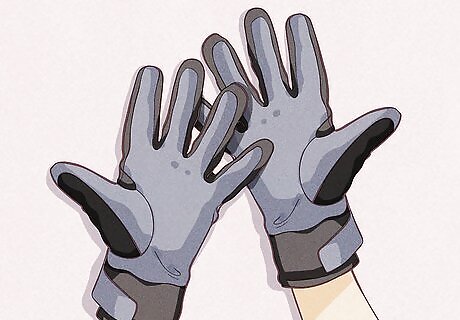
Protect your hands by wearing a thick pair of waterproof gloves with padding. A thick pair of gloves is essential in cold weather. Opt for a pair of casual or functional gloves with a wool or cushion lining. The cuffs of your gloves should extend past the cuffs of your coat to ensure that your wrists aren’t exposed to the elements. Unless you’re going to work, avoid leather dress gloves. They tend to be quite thin and are rarely water-resistant. There are plenty of winter gloves that come with special padding on the fingers that will allow you to use your phone while you’re wearing them. Mittens are a good choice if you’re a fan of them, but they can also make your hands sweat, which will leave them feeling clammy and cold. Avoid them if you tend to get sweaty hands.
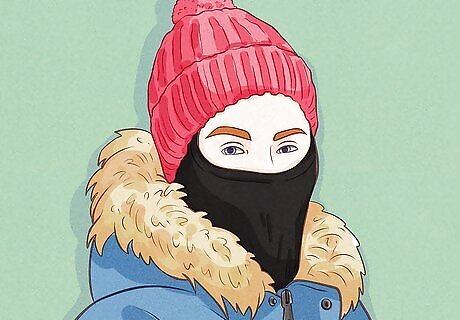
Cover your face with a scarf, balaclava, or ski mask. Covering your face will keep the wind and cold air away from the most sensitive parts of your body. Get a scarf and loop it around your neck. Take the 2 loose ends together and thread them through the loop on the other side. Pull the loose ends to tighten the scarf around your neck. Pull the top section of the scarf up to cover your nose and lips when needed. A ski mask is an excellent choice in extremely cold weather. Buy a ski mask from a sporting goods store to ensure that it’s actually designed for athletic activity. A balaclava is like a hat that covers your entire head, with small openings for your lips and eyes. They’re a good replacement for a hat if you want to keep your face warm. When it comes to winter styles, a cool scarf can really bring an outfit together.

Get thick socks and a pair of big boots to keep your feet warm. To protect your feet, opt for a pair of thick winter boots. Get boots that rise above your ankles, and buy a pair that is a half-size bigger than your regular shoe size to make room for your socks. Get a thick pair of wool socks. If you’re going to be trudging through the snow, opt for thermal socks instead, since wool will absorb water. Cotton absorbs water and moisture. This means that standard cotton socks can actually make your feet feel colder if you’re wearing them with winter boots since they’ll absorb sweat when your feet are warm.
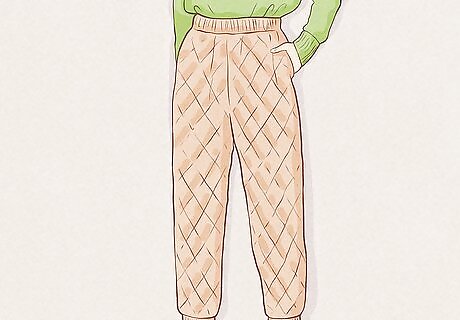
Wear pants made of wool or thick fleece. Unless you’re going to be spending a lot of time outside, fleece and wool pants will both work well in the cold. The thicker the fabric is, the better. Polyester can work as well, but thinner polyester tends to be too breathable for frigid weather. Thick denim is great in the cold, but if it’s snowing or raining it’s not a good choice. Denim can take quite a while to dry in cold temperatures, and it isn’t good at repelling water. Hiking pants are a great choice if they’re made out of nylon. However, spandex and cotton pants will not keep you warm in cold weather.
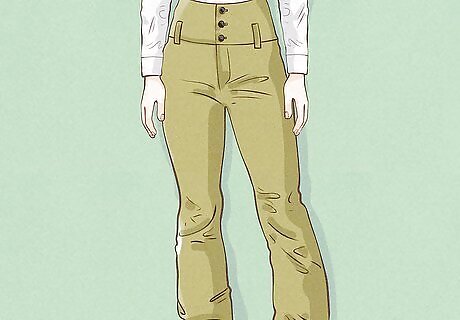
Keep legs warm with a pair of long underwear or snow pants. In extreme temperatures, wear snow pants over your pants to keep your legs warm. If you’re going to work or want an added layer of protection, wear a set of long underwear under your pants to give your legs some added protection. For most people, boots, a coat, gloves, and a hat are enough to stay warm. If it isn’t too cold out, there’s no need to wear any extra garments to protect your legs.
Layering the Right Fabrics
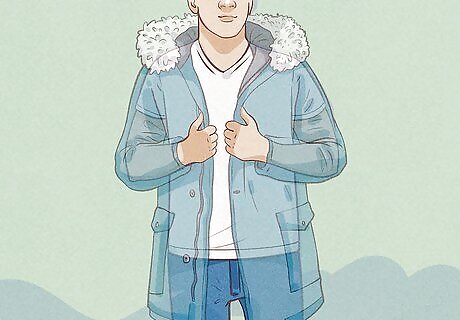
Keep your layers a little loose to give your body room to breathe. While many people believe that layers need to be tight to keep air out, a little bit of space between layers will help keep you warm. The heat that your body produces will help insulate you, and a little space between layers will ensure that hot air has somewhere to go. If your layers are too tight, you’ll start to sweat, which will actually make you colder. If a large coat fits you perfectly when you’re wearing a T-shirt, get an extra-large. If the large leaves you with plenty of space though, there’s no need to go up a size. Clothing shouldn’t be so loose that cold air gets in between your layers.
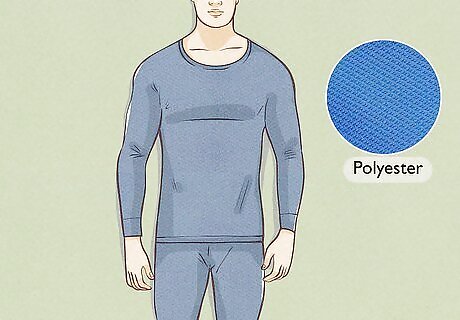
Wear a comfortable base layer of polyester, silk or nylon. Since you’ll sweat a little when you’re dressed warmly, your base layer of clothing must be water-resistant. Polyester and polypropylene are the most common choices, but silk and nylon will wick water away from your skin as well. Avoid wearing a cotton undershirt unless you’re wearing long underwear underneath it. Long underwear is a great choice if you don’t have a ton of clothing that isn’t made of cotton. Most fleeces are made out of polyester or polypropylene. A tighter fleece that’s designed for exercise can actually make a great base layer. If you’re layering socks, use your thinnest pair as a base layer. If one of your pairs is made out of cotton, wear those as your second layer instead. Wear thinner layers close to your body so you don't end up looking super-bulky. If you have any thicker layers, wear those on the outside.

Insulate yourself with a middle layer made of wool, fleece, down, or cotton. Since your base and outer layers will be water-resistant, your middle layer can be made out of any material. While wool, down, and cotton aren’t great when it comes to fighting moisture or water, they’re great insulating materials if you can keep them dry. Throw on a sweater, thick shirt, hoodie, or tight jacket to keep your body warm and comfortable.Tip: In extremely cold weather, wearing 2 coats is a great way to stay warm. Put on any coat or jacket that’s not water-repellent first. Wear your water-repelling coat on top of the first coat for a ton of insulation. Avoid using cotton as your middle layer if it’s going to rain or snow.

Put on your coat and snow pants to keep your outer layer dry. Put on your large coat, hat, gloves, boots, and snow pants to finish insulating your body. If you want an added layer of protection, a thin, waterproof parka, windbreaker, or running jacket can help your outer-layer stay dry. If your middle and base layers are properly layered, your coat and snow pants should have no problem keeping the cold out.
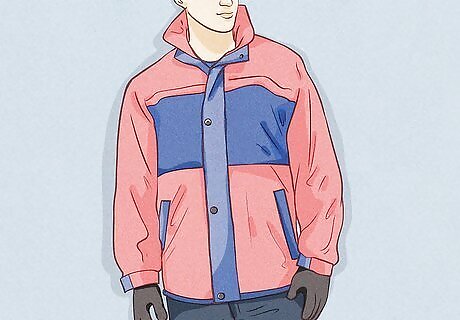
Select water-resistant outer-layers to avoid precipitation. Nylon, Gore-Tex, and Thinsulate all work when it comes to outer-layers since they actively repel water. Jackets and coats that market water-resistant or water-beading materials commonly utilize some combination of these fabrics and are a solid choice as well. These fabrics actively wick water, meaning that you’ll stay dry if it starts raining or snowing. Avoid cotton, wool, or down if it’s going to rain or snow. These materials actively absorb water, and getting even a little wet will make you feel colder than you would if you weren’t wearing them at all. Read the tag on a prospective piece of clothing carefully. Look for the phrase “water repellent” or “water resistant” to see if it’s designed to stay dry in wet conditions.
Using Accessories to Stay Warm
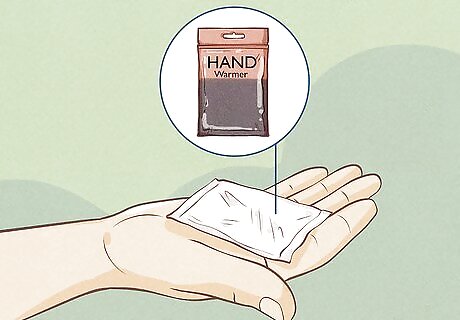
Keep your fingers and feet warm in the snow with hand warmers. When it’s snowing or raining, you may struggle to keep the water out of your boots and gloves. To compensate, pick up some hand warmers. Squeeze a hand warmer to activate it and shake it until it warms up. Stuff some hand warmers in the bottom of your shoes before putting them on and keep a pair in your pockets to hold on to them when your fingers get frigid. If you spend a lot of time outside, get a reusable pair of hand warmers. They’re more expensive up front, but you’ll save money in the long run.

Carry an umbrella if you think it’s going to snow or rain. Nothing will ruin your ability to stay warm faster than water. Bring an umbrella with you whenever there’s a chance of rain or snow to keep your body dry during inclement weather. Use the umbrella whenever it snows or rains to stay dry.

Wear sunscreen and sunglasses to protect your eyes and skin. Sunglasses are essential if it recently snowed and you’re going to spend a lot of time outside. Snow is reflective, and you’ll strain your eyes if you don’t protect them. It’s also quite easy to get sunburned in the winter months. Protect any exposed skin by rubbing sunscreen into your skin. If you get sunburned while you’re outside, the cold air will make it hurt even more than it normally would.Tip: Sunglasses and sunscreen are especially important if you’re skiing or hiking at high altitudes where you’re closer to the sun and the air is thinner.














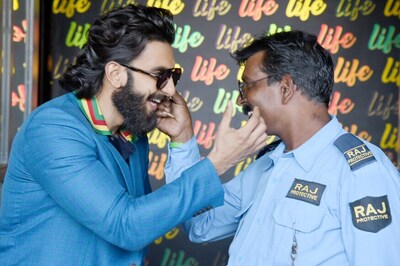


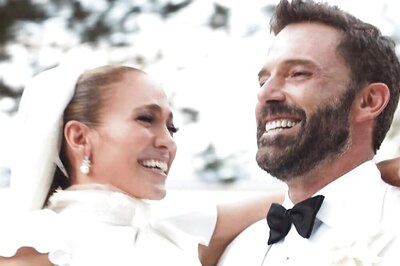


Comments
0 comment